Yorkshire wildlife

Yorkshire
Wildlife is now a separate website.
On this site, see older Yorkshire wildlife weekly photos and Yorkshire wildlife photos.
Wildlife in Yorkshire

Yorkshire
Wildlife is now a separate website.
On this site, see older Yorkshire wildlife weekly photos and Yorkshire wildlife photos.
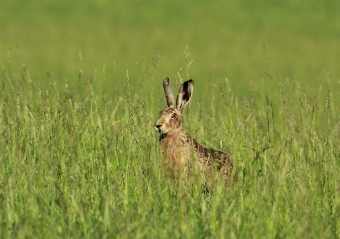
The brown hare, or European hare, is a charismatic wild resident of Yorkshire. This non-native species has been in Britain since Roman times at least. Preferring arable land, or grassland with hedges, brown hares are most likely to be seen in the spring. That's the time of year when they may display 'boxing' behaviour.
Read about the brown hare.
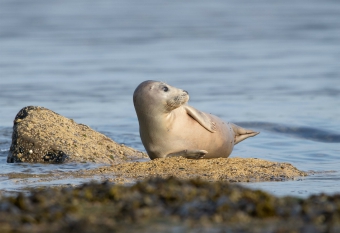
There are colonies of grey seals on the Yorkshire coast. These charismatic animals are well-adapted for life in the Atlantic Ocean, but haul out onto rocky shores to rest, and to give birth and mate between late September and December.
Read about the grey seal.
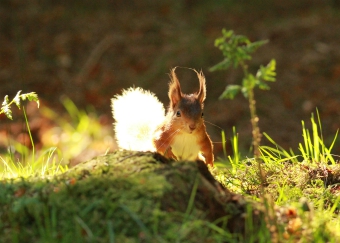
Britain's red squirrels are concentrated in Scotland. Elsewhere, a pox virus carried by greys has seen them disappear. Luckily, there are still some isolated populations in England, including in the Yorkshire Dales. These tree-dwelling, seed and nut-eating squirrels are fast-moving, photogenic foragers.
Read about the red squirrel.
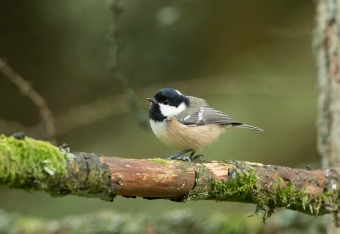
The coal tit is a small tit, which lives in woodlands and feeds at the top of trees, and on their outer branches. In Britain, it has an olive-grey back and wings.
Read about the coal tit.
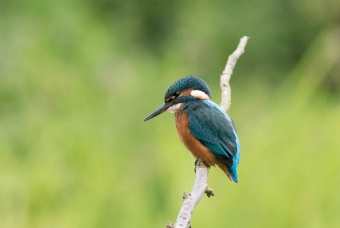
The kingfisher is colourful, charismatic, and instantly recognisable, but not necessarily easy to observe. It lives on small and medium-sized rivers, with slow-flowing sections, some trees, and suitable banks for nesting.
Read about the kingfisher.
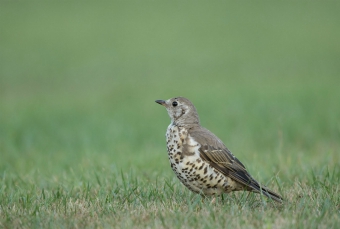
The mistle thrush is one of the larger species in the thrush family. It is resident in Britain and Ireland, and therefore in Yorkshire. It favours open woodland, parks, and large gardens. Its call is a dry rattle.
Read about the mistle thrush.
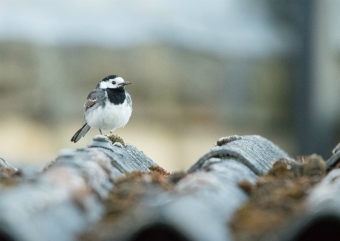
The pied wagtail is a slender bird with a long black and white tail. It searches for insects on lawns and other areas of short grass, making jerky movements with its head as it walks.
Read about the pied wagtail.

The red grouse is a mainly ground-dwelling bird with feathered feet. It lives on heather moors, and dense populations are encouraged on grouse-shooting estates, at the expense of other wildlife and true landscape conservation.
Read about the red grouse.
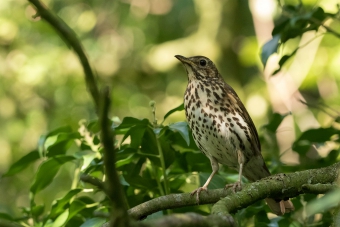
The song thrush is smaller than the mistle thrush, and has arrow-head spots on its breast (as opposed to round spots). It is widespread and common in Yorkshire.
Read about the song thrush.
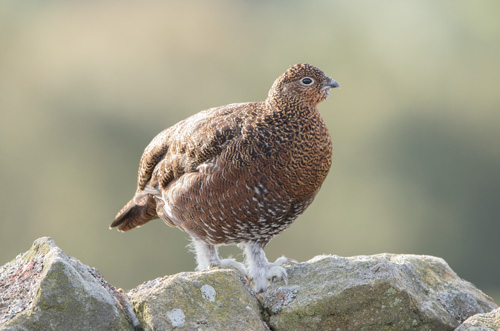
This red grouse was one of a few standing on a dry stone wall at Kex Gill. It's a female - they have paler plumage than the males, and 'ochrous bars' (Collins Bird Guide).
Red grouse are ground-dwelling birds. They are lagopus lagopus scoticus, a local race of the willow grouse, lagopus lagopus.
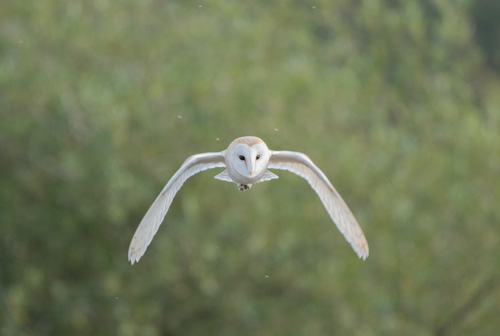
This is a lovely barn owl at Kex Gill.
It's well-known that barn owls come out mainly at night, but Wikipedia thinks British barn owls are more likely to hunt during the day than their Continental cousins. This one can often be seen an hour or so before sunset.
Wikipedia also says that egg-laying is generally between March and June; the young start leaving the nest at nine weeks old for short flights, but are dependent on their parents for a further four weeks. In those 4 weeks, they receive hunting training from their mum!
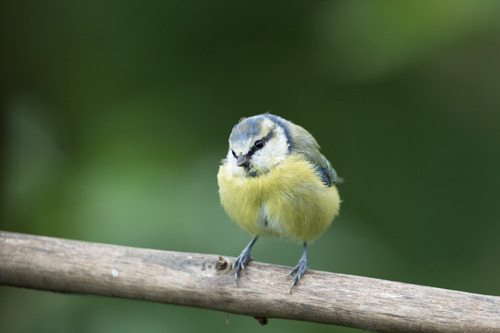
This blue tit was on a perch just outside a hide at High Batts nature reserve.
I think the slightly peculiar plumage must mean that it's a young bird that's not too long out of the nest.
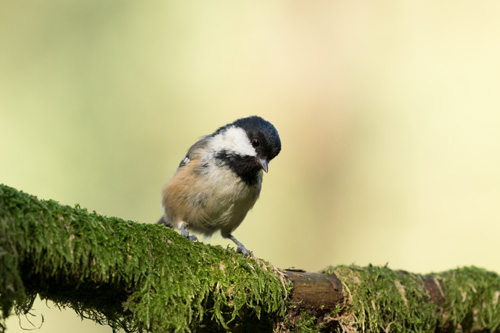
Really, I was looking for red squirrels at Snaizeholme, near Hawes. There was the odd one or two, but they weren't really posing for photos, and in any case they don't look at their very best at this time of year. I prefer them with tufty ears in spring, or a more chocolate brown coat in winter.
So I made do with this coal tit. They move fast, so they're not always easy to capture; but if there's food available, they keep coming back to the same perch.
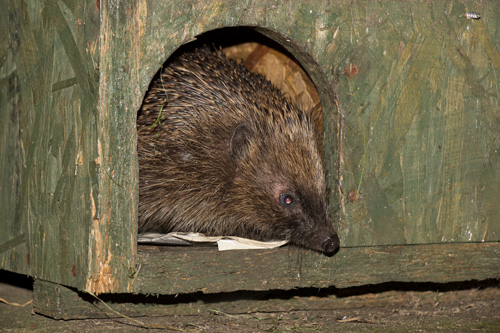
I went to a talk by Emma who is a hedgehog rehabilitator on the outskirts of York. As well as looking after sick and injured hedgehogs, she also provides food for local hogs in feeding stations. This one had just munched on some of the fare provided, and was emerging from the station.
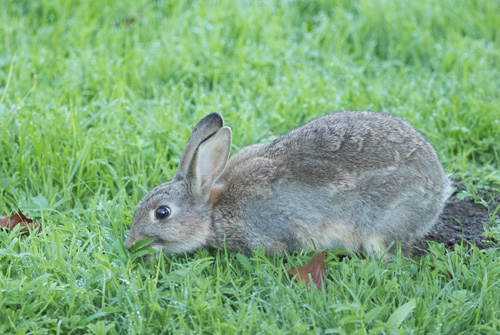
I suppose grass is the staple food of rabbits, but perhaps they enjoy other leaves and vegetation too. Maybe I'm imagining it, but this one seems to have found something especially tasty to eat.
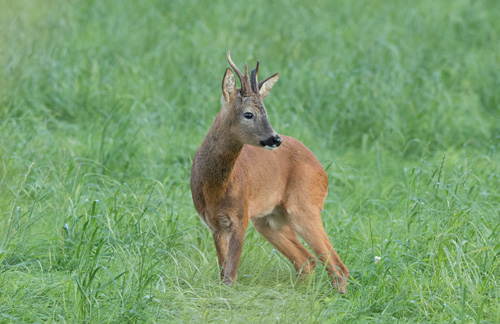
I came across this roe buck, together with a doe, early in the morning by How Hill Road, near Fountains Abbey.
Roe deer have this sandy red-brown fur in summer, and are more grey-brown in colour in winter (Britain's Mammals).
Their antlers are covered in velvet in spring, but have lost it by summer. They mate around this time of year (late July and August), which is earlier than other species of deer. Females give birth in May or June.
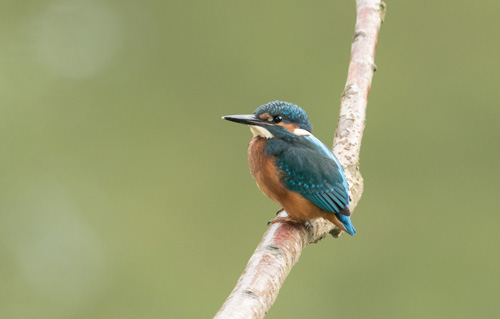
This juvenile kingfisher was fishing the pond at High Batts.
In July, I saw adults here, and adults plus fledglings crossing the Ure. On 4th August, there were at least three juveniles here. It's the white tip on the end of the beak that gives them away, plus more 'faded' plumage. Also, their feet and legs start off black when they first leave the nest, and only gradually take on the adult orange colour.
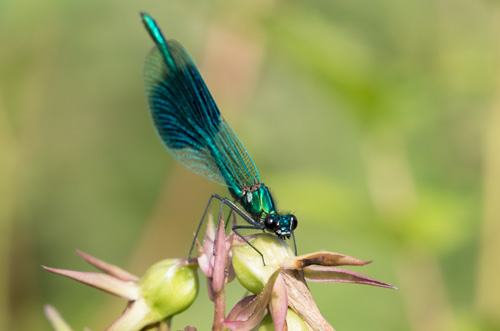
This male banded demoiselle was sitting on a flower at High Batts. Every now and then, it flew up in the air, then came back to its favourite perch.
The female is a lighter green, and doesn't have the dark blue spot on the outer part of the wing, according to the British Dragonfly Society.

Kingfishers regularly visit a pond near the river Ure at High Batts, for some easy fishing. This one is a female: you can tell by the reddish colour on part of the lower mandible; the males' beaks are black.
Watching over the Ure, unless my eyes were deceiving me, I saw six kingfishers zip out of the willow trees on the far bank and cross the river. It could only be adults plus four newly fledged young.
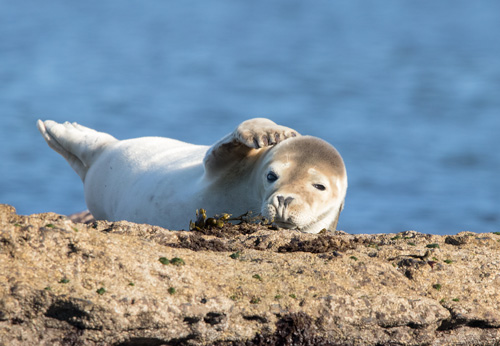
The bigger, older seals can be impressive, but the young ones are definitely the cutest.
This young seal was resting and snoozing and stretching on a rock just off the shore at Ravenscar, in the evening light.
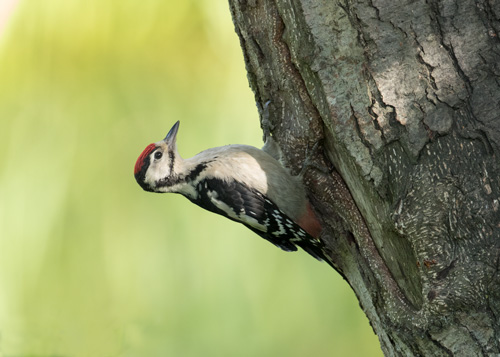
I believe this is a juvenile Great Spotted Woodpecker. As an adult, its crown will be black rather than red.
These woodpeckers do well at High Batts Nature Reserve, where they are given extra rations.
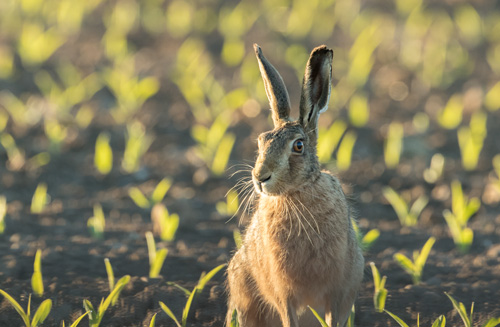
Spring is of course the time of year when hares are most active, and easiest to see.
This hare is showing signs of wear and tear. It may not be in prime condition, but it's still a beautiful animal with wonderful whiskers.
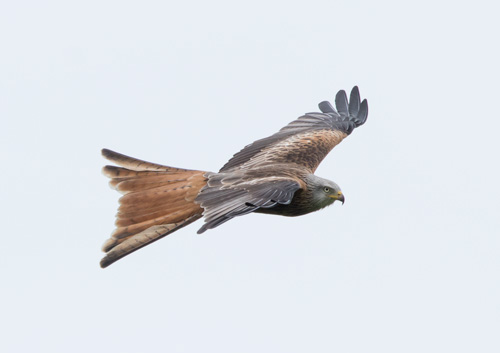
The Yorkshire Showground is a reliable spot for red kites. However often I see them, I don't get blasé about it - I think they are fantastic birds.
Females lay eggs in April, in a nest high up in a tree; the nest can include rubbish like crisp packets. A female red kite incubates her eggs for 31-32 days (RSPB) before they hatch. The young spend about 45 days in the nest, then start to clamber about the nest tree, and fledge after 48-70 days.
This could be a male searching for food for his mate.

This barn owl was sitting on a post at first, carefully watching and listening for voles.
It took flight, and did the barn owl hover, before dropping to the ground. A few moments later, it appeared again, prey in its talons, and flew swiftly back home.
There are some short-eared owls in the same neighbourhood, but so far they haven't been obliging enough to fly near my camera.

Red kites are timid birds with bold plumage.
They look impressive if seen at rest or from underneath. But the most dramatic and striking view is of the upper side of a red kite's wings when it's in flight.
'Kite' is an appropriate name. These birds float and circle, but they aren't good at gaining altitude rapidly.
A few images in a red kite slideshow.
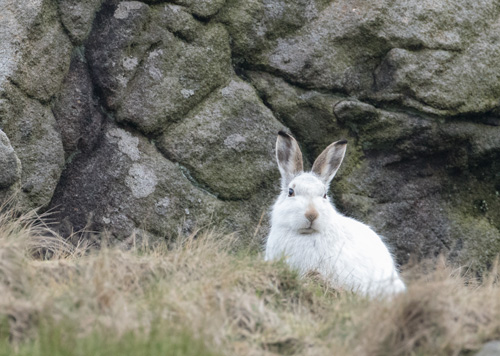
This mountain hare was at Dove Stone, land managed by the RSPB in Peak District. It was in Greater Manchester, not Yorkshire, but I hope that can be forgiven.
The hares, which were introduced from Scotland in the late 1800s, are in their white winter coats at the moment. When there's no snow, that makes the more conspicuous. Their ears have a mix of colours in a pleasing pattern; the tips are black.